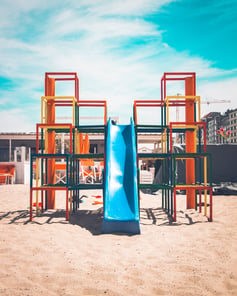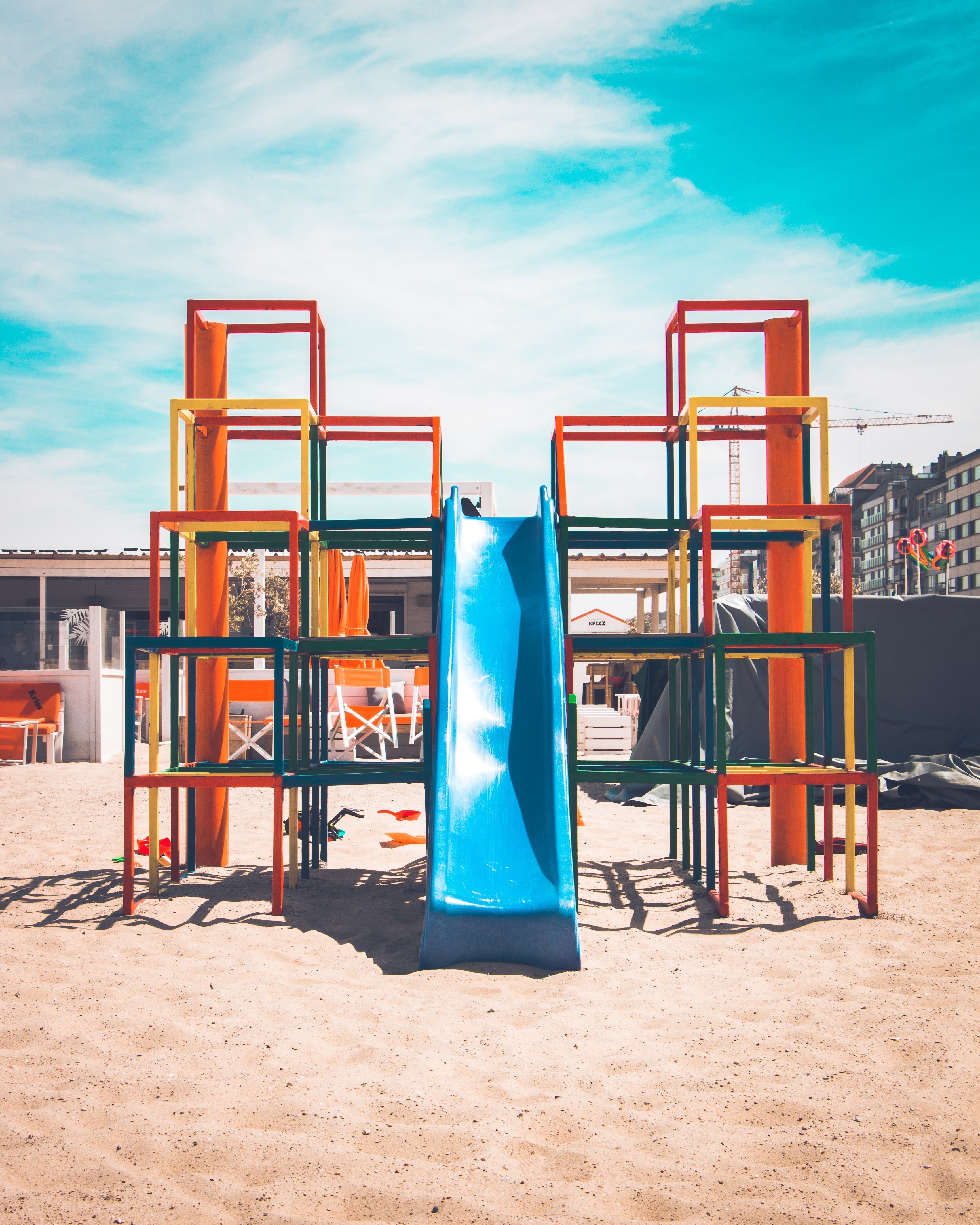It may seem like that as long as there have been children there have been playgrounds, but American youngsters did not have the luxury of playgrounds for most of the first 125 years of our country.
Playgrounds developed as a concept in Germany, first with their outdoor gymnasiums and then with Friedrich Froebel’s development of his first kindergarten in 1837 and its concept of outdoor play.
In fact, the very word kindergarten is a combination of kinder (children) and garten (garden), with Froebel imagining his kindergartens as a garden for play where children could grow and develop physically and emotionally.
“Play at this time is not trivial, it is highly serious and of deep significance,” wrote Froebel in 1885. “Cultivate it, foster it, protect it, and guard it. To the clam, keen vision of one whom truly knows human nature, the spontaneous play of the child discloses the inner life of man."
Friedrich Froebel: Inventor of the Kindergarten
Froebel is considered by many to be the father of the playground movement that filtered from Europe slowly to North America in the 19th century.
filtered from Europe slowly to North America in the 19th century.
“Play is the highest expression of human development in childhood for it alone is the free expression of what is in the child’s soul,” wrote Froebel.
Froebel’s 10 core principles were, according to The British Association for Early Childhood Education, were:
- Childhood is seen as valid, as part of life and not simply as preparation for adulthood. Thus, education is seen similarly as something of the present and not just preparation and training for later.
- The whole child is important. Health – physical and mental is emphasized, as well as the importance of feelings and thinking and spiritual aspects.
- Learning is not compartmentalized, for everything links.
- Intrinsic motivation, resulting in child-initiated, self-directed activity, is valued.
- Self- discipline is emphasized.
- There are especially receptive periods of learning at different stages of development.
- What children can do (rather than what they cannot do) is the starting point in the child’s education.
- There is an inner life in the child, which emerges especially under favorable conditions.
- The people (both adults and children) with whom the child interacts are of central importance.
- Quality education is about three things: the child, the context in which learning takes place, and the knowledge and understanding which the child develops and learns.
Early Playground Development Timeline
Dr. Joe Frost of the University of Texas at Austin in his “Evolution of American Playgrounds” cites the following early playground development timeline:
- 1821: First outdoor gymnasium, Salem Massachusetts Latin School
- 1837: Friedrich Froebel developed the first kindergarten he called a “playground”
- 1872: First legislation to purchase lands for playgrounds in Brookline, Massachusetts
- 1876: First park playground in Washington Park, Chicago
- 1887: First “sand garden” established in Boston, marking the start of the late 1880s “playground movement”
- 1890: First New York City playground for children established by the Society for Parks and for Children
- 1891: First school garden opened at George Putnam School in Boston
- 1894: First “model playground” with modern-type equipment opens at Jane Addams’ Hull House in Chicago
- 1894-1898: “Modern” playgrounds are opened in Baltimore, Denver, Philadelphia, Pittsburgh, and Minneapolis
- 1896: John Dewey establishes his school at the University of Chicago
- 1906: Playground Association of America (PAA) formed
- 1907: PAA Journal, The Playground, and the Normal Course in Play formed
- 1909: Massachusetts Playground Act adopted in 40 cities and towns by popular vote, requiring all towns of 10,000 or more to establish public playgrounds
Playgrounds in the 20th Century
The playground concept gained rapid transaction in the first two decades of the 20th century with the play areas a combination of the “loose parts” theory – where balls, ropes, bricks, blocks, etc. were placed for free play – and fixed playground equipment kids in 2021 would recognize such as swings, slides and climbing bars.
The Great Depression, however, sandwiched between two World Wars would hamper the advancement of playground development.
Europe again would lead the way in new concepts with the advent of the “junk” playground which became the modern “adventure” playground concept.
"Carl Theodor Sorensen, a Danish landscape architect, first gave voice to the concept of the adventure playground in 1931. He had observed that children were perfectly at home playing in junkyards and construction sites, and he saw that they seemed to derive some benefit from playing with materials in ways they weren’t normally allowed to,” said Miracle Recreation in its “The History of Playground Equipment.
Dr. Frost says the timeline for the modern playground development looks like:
- 1918-1945: Period of suspended progress due to Great Depression and World Wars
- 1943: First “junk” (adventure) playground created in Denmark
- 1945: Junk playground concept introduced in the United Kingdom and renamed “adventure” playground
- 1950: First adventure playground opens in Minneapolis, kicking off “novelty” or “imaginative: playground era
- 1976: American Adventure Playground Association formed
- 1980 to now: Playgrounds expand becoming standardized, integrated, accessible, and intergenerational
“Today’s adventure playgrounds are a far cry from the ones in the WWII era in terms of equipment. To be considered an adventure playground, the space needs to have a combination of fixed structures and movable materials that kids can explore and use in inventive ways,” says Miracle Recreation. “An adventure playground might have some traditional equipment like slides and climbing structures, but it also needs to have a variety of tools that allow children to build, such as rope ladders, old tires or boards.”
Along with standardization in the last 40 years has come increased safety as a new generation of playground products are built on rounded edges and hard plastic equipment vs. earlier playgrounds that often-featured sharp edges and metal parts.
Contact Churchich Recreation today to find out how we can help your community create a one-of-a-kind playground experience.
